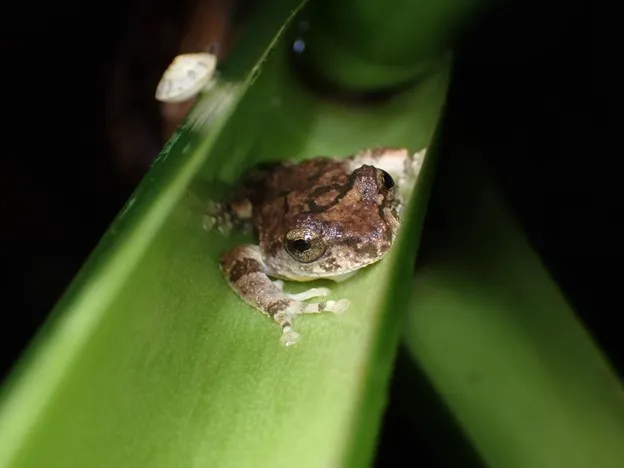Some tadpoles go through the first weeks of life without pooping—at least that’s the case for Eiffinger’s tree frogs (Kurixalus eiffingeri), according to a report in Ecology on September 22.
These tiny frogs, found in Taiwan and on Japan’s Ishigaki and Iriomote islands, are known for their unique habitat choices. The tree-dwelling amphibians lay eggs in tiny water-filled pockets, such as plant stems, tree hollows, and bamboo stumps. Once hatched, the tadpoles spend their early days in these micro-puddles, but these confined spaces create a challenge: without much water, the toxic ammonia released through waste can’t easily dissipate.
Biologists Bun Ito and Yasukazu Okada from Nagoya University in Japan have discovered the tadpoles’ clever solution to this problem—self-imposed constipation. The tadpoles store their waste in an intestinal pouch, holding off on releasing it until they begin transforming into frogs.
In their study, Ito and Okada raised tadpoles from four different frog species in controlled environments. When the time came, they moved the tadpoles into small containers with just over a tablespoon of water, where they measured how much ammonia each species produced. They also checked how much ammonia was being stored within the tadpoles’ bodies.
Tadpoles of Eiffinger’s tree frog released less than half the amount of ammonia compared to the species that produced the most. Not only that, but these tadpoles also stored more ammonia in their guts than two of the other species studied. The researchers noted that, unlike Eiffinger’s tree frogs, the other species typically laid their eggs in larger, open water bodies, where ammonia is more easily diluted.
“This behavior likely helps keep their tiny pools from becoming too contaminated,” Ito explains. Though some ammonia still leaked into the water, possibly through their urine, the strategy significantly reduced the risk of toxicity.
Interestingly, Eiffinger’s tree frog tadpoles have another defense mechanism. Ito’s experiments revealed that these tadpoles can survive in higher concentrations of ammonia compared to other species, such as the Japanese tree frog (Dryophytes japonicus). This might seem surprising for a species that holds off on defecating, but Ito suggests that the tadpoles’ resilience could be a necessary adaptation. In these cramped nursery spaces, they often share their environment with other animals, like mosquito larvae, which also produce ammonia.
“We believe the tadpoles developed a tolerance to ammonia as a dual defense,” says Ito. “It shields them from the ammonia released by both other organisms and themselves.”
